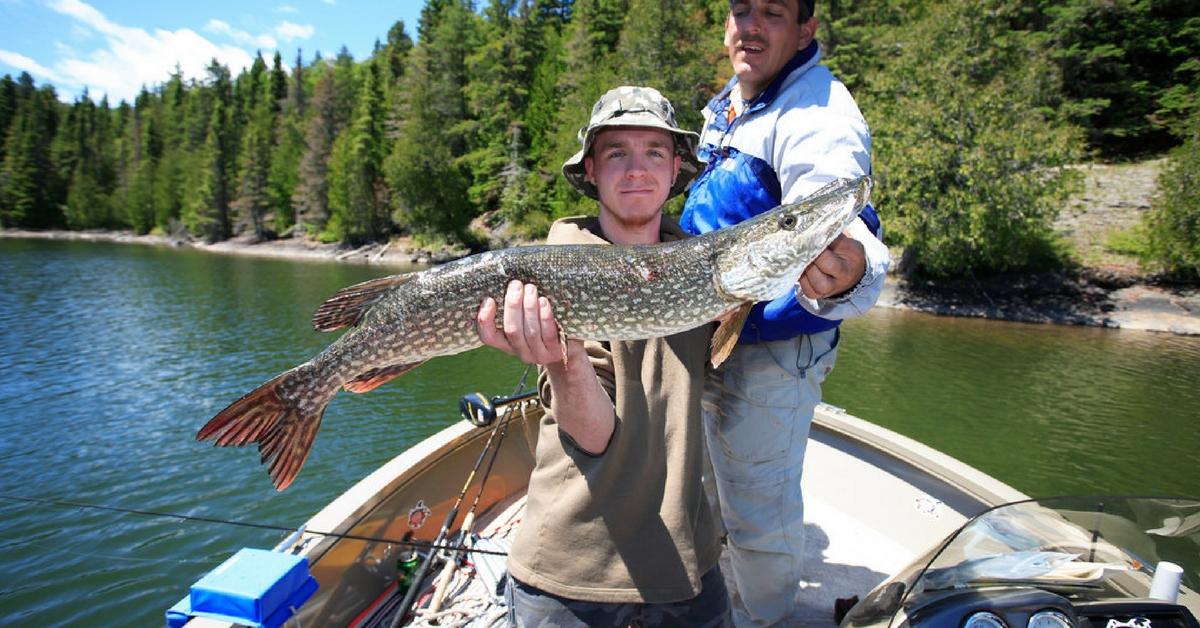Pike Fishing 101: How To Catch The Northern Pike
Throughout their range, northern pike are one of the top predators in any system they inhabit. They are voracious eaters, extremely hard fighters, and usually under-targeted by anglers. Because of this, pike fishing is some of the most exciting and fast action you can get on a northern lake.Whether you’re looking to learn about and target a new species, or just want to salvage a day when other species aren’t biting – the following is a quick rundown on how to target northern pike, from location to presentation.
1. Find The Grass
Northern Pike are at home around any type of aquatic vegetation. Their elongated body shape and large, toothy mouths make them extremely effective at chasing down and catching all types of prey fish in weedy confines. When pike fishing, focus on shallower, weedy areas like bays and flats. Outside weed lines, pad fields, and reed or wild rice beds are also liable to hold a number of pike throughout the summer.
2. Cover Water
Because they are so aggressive, if there are pike around it shouldn’t take you long to find out. For that reason, don’t get bogged down fishing a long time in areas if you’re not getting bit. Keep the trolling motor on high and use moving baits to cover water until you run into some active fish. Pike will load up in specific spots in the grass, so pay attention to the areas you catch them in, and try to find other areas that look similar – the pike will likely be there as well.
3. Use Gaudy Colors
Pike are visual feeders, and tend to be attracted to bright colors. Use high-visibility colors like white, chartreuse, and bright orange. They also respond well to baits that put off lots of vibration or sound. Top choices for pike include spinnerbaits, inline spinners, lipless cranks, and loud topwaters like buzzbaits and walking baits.
4. Don’t Be Afraid To Upsize
As any musky fisherman knows, northern pike are notorious for having eyes bigger than their stomachs. As a rule, when targeting pike don’t be afraid to go bigger with your tackle selection. Bigger baits can be seen from farther away, which means they draw pike from further away.
5. Use The Right Tackle
Pike can grow extremely large, and fight very hard. For that reason, make sure your rod, reel, and line are up to the task. Many anglers have felt the sting of a big pike breaking them off because they used too light of line. Medium heavy to heavy power rods, and strong braided line (30 to 50 pound) are necessities when pike fishing.
6. Leader-up
In addition to the right gear, make sure you use a steel or heavy fluorocarbon leader any time you’re pike fishing – particularly if your lake produces big pike. They have razor sharp teeth and they can cut even heavy braid like butter. Leaders are cheap, and will pay for themselves in short order by the number of baits they save.
7. Don’t Lip 'Em
This should be obvious, but if you’ve never fished for northern pike before, here’s your warning: Don’t lip them. Serious pike anglers carry long needle nose pliers, and a jaw spreader – as unhooking them can be a delicate process.
Updated December 29th, 2020 at 3:04 AM CT


